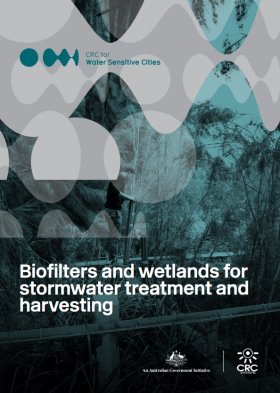Biofilters and wetlands for stormwater treatment and harvesting
Abstract
Stormwater has emerged as a viable, alternative water resource. As a result, general urban runoff (e.g. stormwater that runs off streets and car parks) has been increasingly harvested in the past few years. The CRC for Water Sensitive Cities (CRCWSC) aimed to refine existing, and develop novel stormwater harvesting technologies, building upon the proven concepts of water sensitive urban design (WSUD). Hence, a series of laboratory- and field-scale research projects were designed to investigate two of the most common WSUD technologies used in Australian stormwater harvesting schemes – biofilters and constructed wetlands – for their capacity to remove different pollutants (nutrients, faecal microorganisms and micro-pollutants).
It was confirmed that biofilter design and operational conditions greatly affect the overall pollutant removal capacity. For instance, nutrient removal capacity was shown to improve using a filter media with a low nutrient content and with the inclusion of a submerged zone (SZ) containing a low nutrient content carbon source. A mixed planting including both effective and ineffective plant species for nutrient removal (minimum 50% effective species) was suggested over a single plant species. Current, bestpractice biofilters were found to sustain effective long-term phosphorous (P) removal without breakthrough, yet augmenting traditional biofilter media (loamy sand) with naturally occurring iron- and aluminium-oxide rich sand (mixing ratio 1:3 - 1:1 or 25 - 50% Skye sand) were found to further improve long term P retention.
